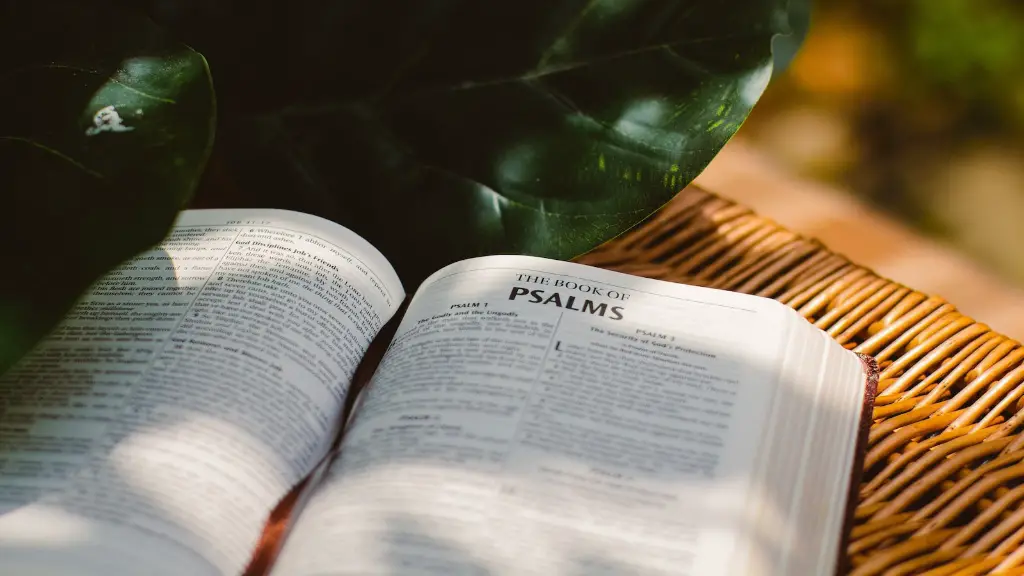Since Biblical times, Gog and Magog have had an important, mysterious and significant role in Old Testament scripture. The two names appear together in the books of Ezekiel, Genesis and Chronicles and have been interpreted by scholars, theologians and Bible readers for thousands of years. Who are Gog and Magog and what does scripture tell us about their identity?
History of Gog and Magog
Gog and Magog are first mentioned in Genesis 10:2, where they are described as sons of Japheth, the son of Noah. From this biblical genealogy, they are often said to be descendants of the ancient tribes of Magog and the House of Gog. Other scholars attribute their ethnicity to the Scythian or Cimmerian people of Central and Eastern Europe, who were referred to by ancient Assyrians as Gimirrhi or Gimirrai.
In the Bible, Gog and Magog are associated with disorder and chaos, and are often seen as ominous figures. In Ezekiel 38 and 39, Gog is described as ‘the chief prince of Meshek and Tubal’ and set on a course of destruction against God’s people. He is joined by Magog, ‘the prince of Rosh, Meshech, and Tubal’. The two lead an evil horde of nations into battle with the Israelites, but are ultimately defeated by divine intervention.
Modern Interpretations
Despite the overwhelming focus on ancient historical accounts in the Bible, interpretations about the identity of Gog and Magog have evolved over time. In modern times, Gog and Magog have become a metaphor for dangers from the outside world and a cautionary symbol for potential enemies. This interpretation has been popularized by works like John Bunyan’s The Pilgrim’s Progress and Jonathan Swift’s A Tale of a Tub.
Today, Gog and Magog have become the archetypes for the forces of evil. Christian authors and theologians have interpreted their roles in the Bible and beyond in various ways. Some believe that Gog and Magog will reappear in the end times to do battle with the forces of good while others see them as symbols of political, social and spiritual disorder. Others still interpret them as a warning to humanity to be on guard against the dangers of the outside world.
Apocalyptic Prophecy
In the New Testament book of Revelation, Gog and Magog make a surprise reappearance in the second half of the book. In particular, Revelation 20:7-8 refers to ‘Gog and Magog, the nations that encircle the land’ and speculates that they will be vessels of evil in the end times. These passages have been interpreted by some theologians as a sign of a coming apocalypse, as Gog and Magog are often seen as evil omens.
Since these passages have been open to interpretation for thousands of years, scholars have come up with a range of different interpretations. Many believe that the coming of Gog and Magog is a sign of a divinely-ordained judgment, while others argue that it is a warning from God to stay vigilant and guard against the dangers of the end times.
Eschatology
Eschatology is the study of the end of the world, with particular focus on end times prophecy. Gog and Magog are often referenced in eschatology and are associated with the coming of judgment and tribulation. As the Bible does not offer a specific interpretation for Gog and Magog, eschatologists have constructed their own interpretations, often equating them with specific enemies of God.
In Christian eschatology, Gog and Magog are often seen as symbols of the enemies of the return of Jesus Christ. In Islamic eschatology, they are seen as symbols of ultimate evil and a warning to believers to stay vigilant in the face of imminent danger. In either case, Gog and Magog are seen as powerful, mysterious and potentially dangerous symbols.
Theological Analysis
As with most eschatological topics, there is no single interpretation of Gog and Magog in the Bible. Theologians and religious scholars have argued various interpretations over the years, leading to a range of different ideas about their intended purpose and symbolic meaning. Some suggest that Gog and Magog are literal figments of God’s wrath, while others view them as metaphors for the dangers of powerful enemies.
At its core, the interpretation of Gog and Magog in the Bible requires a deep understanding of ancient symbols, biblical themes and the overall context of the scriptures. In the end, the identity of Gog and Magog may remain ambiguous, but their place in the Bible remains firmly established.
Symbolic Significance
Gog and Magog have a long, mysterious and powerful presence in the Bible and within religious faiths. While there is no clear explanation for their identity and ultimate purpose, they remain an important part of scriptural accounts and a source of debate and interpretation. For Christian believers, they serve as cautionary symbols and a warning against dangerous enemies. In the Islamic faith, they are seen as ultimate symbolic figures and a reminder to stay vigilant in the face of evil. In short, Gog and Magog represent a powerful, mysterious and symbolic presence in the Bible.
Conclusion
Since their first mentions in the Bible, Gog and Magog have been a source of debate and mystery for believers and non-believers alike. For thousands of years, theologians, scholars and believers have interpreted their identity and ultimate purpose in a variety of ways. From Old Testament scriptures to the books of Revelation and beyond, Gog and Magog continue to be an important and significant symbol in many faiths. With so many interpretations, their ultimate purpose remains as mysterious and powerful as ever.



